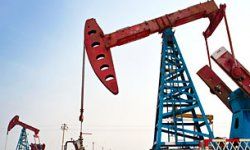Key Takeaways
- Offshore Drilling and ROVs (Remotely Operated Vehicles) introduced innovative methods to extract oil from beneath the sea floor, including the use of ROVs for drilling in deep water.
- Hydraulic fracturing is a process developed in the 1940s that injects water and chemicals into wells under high pressure to create fractures in the rock, allowing oil to flow more freely.
- Horizontal drilling involves drilling vertically deep down and then horizontally through an oil reservoir, increasing efficiency and allowing drilling under sensitive areas.
Oil drilling has been around for more than a century. But because of the numerous developments in the technology, it has grown leaps and bounds in that time. And this growth of oil production has also been essential to changing the face of civilization.
In 1859, Edwin Drake dug what is considered the first oil well in Titusville, Penn. During that period, oil was used primarily to make kerosene for lighting purposes. But the development of the automobile industry soon ignited a new market for oil and spurred increased production -- from 150 million barrels produced worldwide in 1900 to more than one billion barrels in 1925.
Advertisement
One of the earliest innovations to improve oil drilling was the rotary drill, first used in the 1880s. This used a rotating drill bit to dig into the ground (as opposed to Drake’s method of cable-tool drilling that lifted and dropped a drill bit into the well). For more on the rotary drill, as well as an overview of the oil drilling process, take a look at "How Oil Drilling Works."
But the rotary drill was only the beginning in a long line of dramatic advancements that would develop in the 20th century. Some of the most notable that we'll discuss helped improve the efficiency of oil production while making it easier to find oil.
